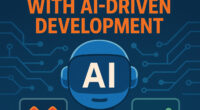To guarantee AI ethics at work, focus on reducing bias and protecting employee privacy. Use diverse data, involve human review, and implement ongoing oversight to minimize unfair outcomes. Be transparent about data collection, purposes, and safeguards, and obtain clear employee consent. Establish human oversight to prevent discrimination and ensure decisions align with ethical standards. Stay informed about best practices—there’s more to uncover on building responsible, fair AI systems in the workplace.
Key Takeaways
- Implement diverse, balanced data collection and involve human review to identify and mitigate biases in employee AI tools.
- Establish transparent data policies, obtain explicit employee consent, and clearly communicate data use purposes.
- Develop ethical frameworks aligned with organizational values and adopt standards like IEEE’s Ethically Aligned Design.
- Maintain human oversight and continuous monitoring to ensure fairness, prevent discrimination, and uphold accountability.
- Prioritize employee privacy by safeguarding sensitive information, enabling data access reviews, and complying with regulations like GDPR.
Understanding AI Bias and Its Implications in the Workplace

Understanding AI bias is essential because it directly impacts fairness and equality in the workplace. AI bias happens when AI systems produce unfair or discriminatory results, often because of biased data or algorithms. This bias can influence critical decisions like hiring, performance reviews, and promotions, leading to unfair treatment of certain groups. Tools now exist to detect and reduce bias in AI-driven HR processes, but bias remains prevalent—36% of algorithms show signs of bias. This raises ethical concerns, with 67% of HR leaders prioritizing responsible AI use. Bias can stem from poor data quality, flawed algorithms, human prejudices, and lack of diversity in development teams. Addressing these issues is fundamental to ensure AI supports fair, transparent, and ethical workplace practices. Additionally, understanding specific issues like toilet flushing mechanisms can highlight the importance of proper infrastructure and maintenance, which parallels the need for careful oversight and algorithmic fairness in AI systems. Recognizing data quality issues is also crucial, as they can significantly influence the outcomes produced by AI tools and contribute to biased results. Incorporating strategy and mastery principles can further enhance efforts to develop ethical and unbiased AI solutions. Moreover, fostering diverse development teams can help mitigate unconscious biases embedded in algorithms, promoting more equitable AI outcomes.
Strategies for Testing and Mitigating Bias in Employee AI Systems

To effectively address bias in employee AI systems, you need to implement robust testing and mitigation strategies. Start by collecting diverse, balanced data across protected categories and involve trained linguists for de-identification. Incorporate human review processes to evaluate models for fairness, identifying errors or biases that may slip through automated checks. Use machine learning-based tools to analyze data patterns and uncover hidden biases. Generate synthetic data to ensure your training datasets are representative, reducing bias risks. Regularly test your AI systems through continuous testing methodologies that combine human judgment and ML tools. Mitigate bias by using diverse training data, bias detection software, and real-time monitoring. Human oversight remains essential to investigate flagged issues and ensure ongoing fairness in your AI-driven HR processes. Responsible AI development emphasizes transparency and ongoing evaluation to maintain ethical standards in AI applications. Incorporating bias mitigation techniques into your testing process can further reduce the risk of unfair outcomes. Additionally, understanding the role of diverse data is crucial for developing more equitable AI systems, especially considering the importance of subconscious power during sleep in shaping vibrational states. Furthermore, fostering awareness of personal growth principles can contribute to cultivating more mindful and ethical AI practices within organizations. A comprehensive approach that includes local legal knowledge can help organizations stay compliant and ethically aligned as they deploy AI solutions.
Ensuring Transparency in Data Collection and Usage Practices

You need to be transparent about your data collection and usage practices to build trust with users. Clearly communicate your data policies and guarantee you get explicit consent before gathering any information. Making the purpose of data use clear helps users understand how their data is handled and reassures them of your commitment to privacy. Transparency about data flow and decision-making processes is essential for demonstrating responsible AI practices and maintaining user confidence. Additionally, explaining the types of cookies used and their specific functions can further enhance user understanding and trust. Incorporating security measures to protect collected data demonstrates a proactive approach to safeguarding user information. Understanding your company’s privacy policies and how they align with legal standards further supports responsible AI deployment. Being aware of AI ethics principles, such as fairness and accountability, can also guide your data practices toward ethical standards. Recognizing the importance of diverse data sources can help mitigate bias and promote fairness in AI systems.
Clear Data Policies
Clear data policies are essential for building trust and guaranteeing transparency in AI systems. They define how you collect, use, and protect employee data, fostering confidence and compliance. To achieve this, focus on transparent practices such as:
- Defining data types, sources, and collection methods to clarify what information is gathered and how.
- Specifying data usage, sharing, and storage policies to ensure responsible handling and privacy.
- Implementing data validation, retention, and access controls to maintain accuracy and prevent misuse.
- Incorporating ongoing personality assessments to better understand employee reactions and improve AI interactions, ensuring the system remains fair and unbiased. Emphasizing vetted data sources can help maintain the integrity of the information used, especially given the importance of diverse genres including action, romance, and fantasy in understanding cultural storytelling. Additionally, establishing standardized data validation protocols can further enhance data accuracy and reliability across various AI applications, supported by understanding dream symbols that reveal subconscious insights into human perception and behavior.
Employee Consent Protocols
How can organizations guarantee employees stay informed and comfortable with AI data collection practices? The key is transparency. You should be clearly notified about what data is collected and how it will be used, especially for significant decisions. You must also have the opportunity to review and correct your data when possible. Employers should update policies regularly and educate you on AI ethics. Protect confidential information by avoiding entering sensitive data into AI tools without approval. Additionally, monitoring AI activity ensures responsible use, helping you stay confident that your privacy rights are respected. Regular oversight is essential to ensure compliance with evolving regulations and ethical standards. Incorporating employee privacy considerations into employee policies can also promote fairness when personal circumstances change. Understanding data governance practices can further help organizations maintain trust and accountability in AI implementations. Proper training for staff on AI ethics can enhance understanding and reduce unintentional bias or misuse. Furthermore, reviewing the caffeine content of AI-generated data reports can help prevent misconceptions in decision-making processes.
Purpose of Data Use
Ensuring transparency in data collection and usage is essential for building trust between organizations and their employees. When you clearly communicate why data is collected and how it’s used, you foster confidence and comply with regulations like GDPR and CCPA. Transparency involves updating privacy policies to explain AI data practices, explicitly disclosing data collection methods, and maintaining ongoing communication about data use. You should also implement systems to track data throughout its lifecycle, ensuring compliance at every stage. This transparency helps prevent misunderstandings and demonstrates your organization’s commitment to ethical AI use. Additionally, understanding AI ethics roles can inform ethical considerations around data about animals and their traits, fostering a more comprehensive approach to privacy.
Protecting Employee Privacy in AI-Driven HR Processes

Protecting employee privacy in AI-driven HR processes is essential to build trust and encourage acceptance of new technologies. With 55% of HR professionals concerned about data privacy, safeguarding sensitive information becomes a priority. Implementing robust privacy tools can reduce data breaches by 50% by 2025, but concerns remain a major barrier to AI adoption. Transparency about how employee data is collected, stored, and used helps foster trust. Clear policies and secure data management practices show employees that their privacy is valued. Regular audits and strict access controls ensure data is protected from misuse. When employees feel confident that their privacy is respected, they’re more likely to accept AI tools, leading to smoother integration and better outcomes for everyone involved.
Establishing Human Oversight and Employee Rights in AI Decision-Making

Establishing human oversight in AI decision-making is essential to prevent biases, discrimination, and operational errors from undermining fairness and trust. Your role is to ensure AI decisions align with societal values and ethical standards through moral judgment. This oversight provides accountability by making outcomes transparent, fair, and justifiable. It also helps you identify and correct errors or biases in AI operations, maintaining trust between the technology and those impacted.
Human oversight ensures AI fairness, accountability, and trust by aligning decisions with ethical standards and correcting biases.
Key steps include:
- Designating responsible individuals or teams for monitoring AI performance and ethics
- Creating clear escalation procedures for questionable or harmful outputs
- Training staff to balance automation with critical supervision and intervention when necessary
Building Ethical Frameworks for Responsible AI Deployment

How can organizations guarantee their AI systems align with core ethical principles? Start by identifying your organization’s values and ensuring they guide AI development. Adopt established frameworks like IEEE’s Ethically Aligned Design or the EU’s Ethics Guidelines for Trustworthy AI to set a solid foundation. Develop clear guidelines that translate these values into actionable standards, and regularly review and update them to adapt to new challenges. Transparency is crucial—explain AI decision-making processes openly to build trust. Assign accountability by designating responsible teams, maintaining audit trails, and establishing feedback channels. Form ethical review boards to oversee deployment. By integrating these steps, you’ll create a responsible AI environment that upholds fairness, privacy, and societal trust.
Frequently Asked Questions
How Can Employees Report Concerns About AI Bias or Privacy Violations?
You can report concerns about AI bias or privacy violations through multiple channels. Use internal reporting systems designed for confidentiality, or submit anonymous feedback to avoid retribution. Reach out to employee representative bodies or designated AI ethics teams for guidance. Some companies also involve external ombudsmen for impartial reviews. Make certain you understand your organization’s clear communication channels and leverage regular feedback opportunities to address issues proactively.
What Are the Legal Consequences of Non-Compliance With AI Ethics Standards?
Are you aware of the legal risks you face if you ignore AI ethics standards? Non-compliance can lead to costly lawsuits, hefty fines, and damage to your reputation. You might also face data breaches and privacy violations, which compromise employee trust. Without proper oversight and transparency, your organization risks legal action under laws like GDPR and the Civil Rights Act, making adherence essential to avoid these serious consequences.
How Often Should AI Systems Be Audited for Bias and Fairness?
You should audit your AI systems regularly to guarantee ongoing fairness and compliance. The frequency depends on the system’s complexity, impact, and regulations, with some jurisdictions requiring annual audits. For more complex or high-impact systems, consider more frequent checks or continuous monitoring. Always update audits after model changes or data shifts, and involve third-party reviewers when possible to maintain transparency, trust, and legal compliance.
Can Employees Opt Out of Ai-Driven Monitoring or Assessments?
You might wonder if you can opt out of AI-driven monitoring or assessments. Currently, laws limit your options, and most employees can’t completely refuse AI surveillance. However, you have the right to report unfair or biased AI decisions. Employers should provide accommodations if you wish to opt out, but legal protections are still evolving. Staying informed about your rights and advocating for transparency is essential in these situations.
What Training Is Available for Managers on Ethical AI Use and Oversight?
Imagine you’re steering a ship through uncharted waters, needing a compass to navigate ethical dilemmas. You can take advantage of various training programs designed for managers, like Traliant, Skillsoft, NAVEX, and TalentLMS. These courses act as your navigational tools, guiding you through AI risks, bias mitigation, legal compliance, and responsible oversight. Completing these equips you to lead with integrity, ensuring AI’s benefits outweigh its potential pitfalls.
Conclusion
By actively addressing bias and privacy concerns, you can create AI systems that are fair as a well-balanced scale. Transparency and human oversight are your guiding lights, ensuring trust and accountability. Remember, implementing ethical AI isn’t a one-time task but an ongoing journey—like tending a garden that requires constant care. Keep these principles at the forefront, and you’ll foster a workplace where technology uplifts everyone, not just some.









